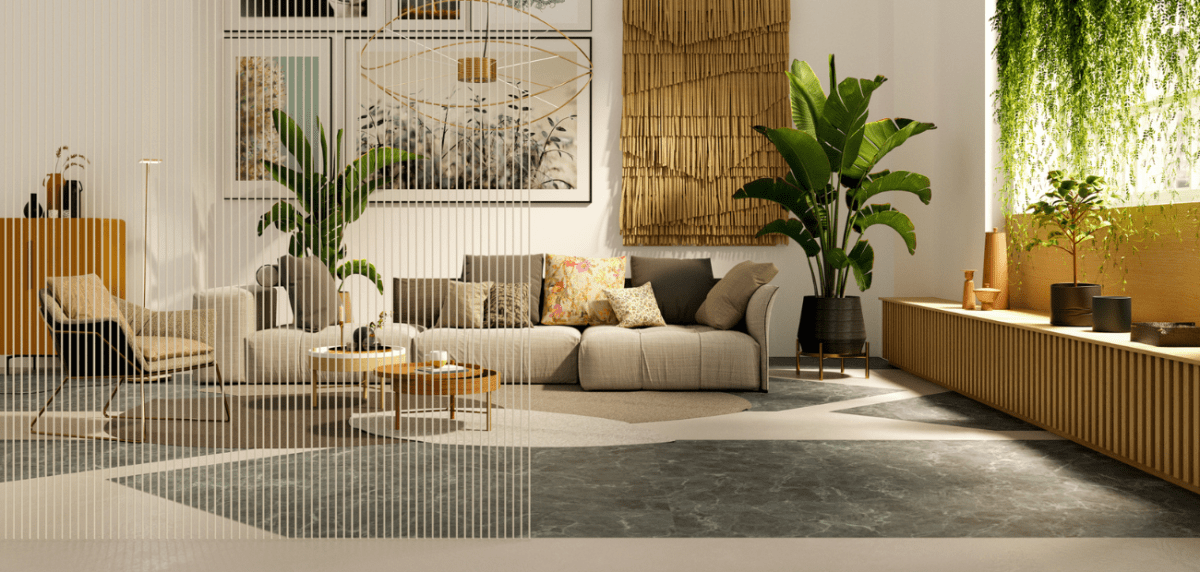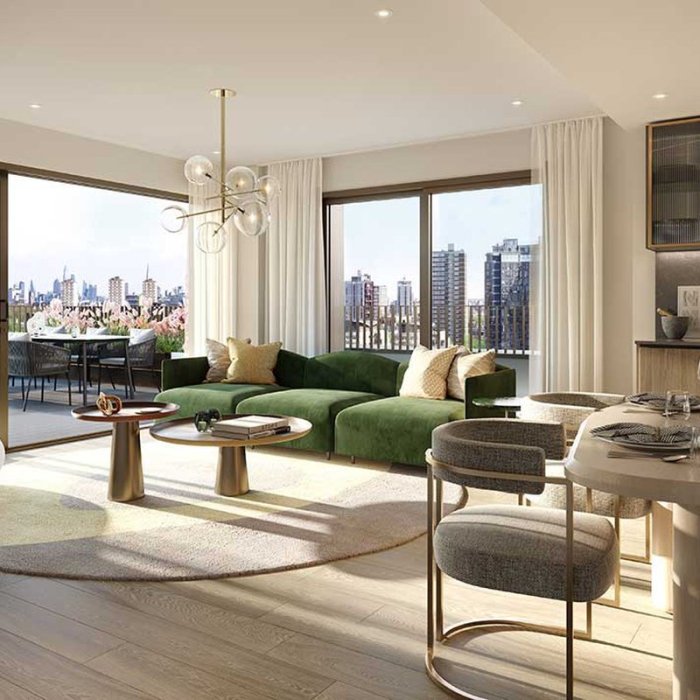
Biophilic design in real estate architecture is more than just a trend; it’s a transformative approach that integrates nature into our built environments. This design philosophy emphasizes the connection between people and nature, creating spaces that nurture our well-being and foster a sense of tranquility.
By incorporating natural elements such as light, plants, and water features into residential and commercial properties, biophilic design not only elevates aesthetic appeal but also promotes mental health and environmental sustainability. With an increasing number of successful projects showcasing these principles, the potential for biophilic design to redefine real estate architecture is immense.
Biophilic Design Principles in Real Estate Architecture

Biophilic design is an innovative approach to architecture and urban planning that seeks to connect people with nature, enhancing their quality of life and well-being. By integrating natural elements into built environments, real estate projects can foster a sense of place, promote sustainability, and improve the overall aesthetic value of properties. This design philosophy is increasingly relevant in today’s world, where the importance of mental and physical health is paramount.The core principles of biophilic design revolve around the innate human affinity for nature, often referred to as “biophilia.” These principles include the incorporation of natural light, the use of organic materials, the integration of greenery, and the design of spaces that facilitate a connection to the outdoors.
Real estate architecture that embraces these elements can create environments that are not only visually pleasing but also beneficial for occupants’ mental and emotional health. By utilizing biophilic design, developers can create spaces that encourage relaxation, increase productivity, and ultimately enhance the experience of living or working in these environments.
Benefits of Incorporating Natural Elements in Design
The integration of natural elements in both residential and commercial properties offers numerous advantages that resonate with occupants and investors alike. The following points Artikel the significant benefits of biophilic design:
-
Enhances Well-Being:
Access to natural light and greenery has been proven to reduce stress, enhance mood, and improve overall psychological health.
-
Improves Air Quality:
Natural ventilation and the use of plants can significantly enhance indoor air quality, promoting healthier living and working conditions.
-
Increases Property Value:
Properties that feature biophilic design elements often see higher market demand and appreciation in value due to their unique appeal.
-
Encourages Sustainability:
Biophilic design prioritizes sustainable materials and practices, which reduces environmental impact and promotes ecological balance.
-
Boosts Productivity:
In commercial settings, a biophilic environment can enhance employee satisfaction and productivity, leading to better business outcomes.
Examples of Successful Biophilic Design in Recent Real Estate Projects
Several recent real estate projects have successfully implemented biophilic design principles, showcasing their potential to transform urban environments. Notable examples include:
-
The Bosco Verticale (Vertical Forest) in Milan, Italy:
This residential building features two towers adorned with over 9,000 trees, creating a vertical forest that provides natural insulation and reduces air pollution.
-
The Eden Project in Cornwall, UK:
This ecological complex houses biomes filled with diverse plant species, integrating education and recreation with nature, promoting environmental awareness.
-
One Central Park in Sydney, Australia:
This mixed-use development incorporates extensive gardens and green spaces, allowing residents to engage with nature while enjoying urban living.
-
The High Line in New York City, USA:
A former elevated railway transformed into a public park, featuring native plants and natural landscapes, it provides a green oasis in the heart of the city.
These projects illustrate the versatility and benefits of biophilic design, proving that integrating nature into architecture enhances both aesthetic appeal and functionality in real estate development.
The Role of Real Estate Agents and Realtors in Promoting Biophilic Design
Real estate agents and realtors play a crucial role in the promotion of biophilic design, which integrates nature into architectural spaces. Their expertise not only helps buyers find homes that resonate with their lifestyle but also educates them on the profound benefits of living in harmony with nature. By emphasizing biophilic features, real estate professionals can enhance property appeal and foster a deeper connection between occupants and their environments.Realtors can adopt various strategies to effectively highlight biophilic design features in property listings.
By showcasing natural elements and eco-friendly aspects, agents can attract buyers who prioritize sustainability and wellness. This approach not only positions properties more favorably in the market but also aligns with the growing demand for healthier living spaces.
Strategies for Highlighting Biophilic Features
In order to emphasize biophilic design in property listings, real estate agents should utilize a variety of strategies. These methods not only showcase the properties effectively but also inform potential buyers about the advantages of biophilic features.
- Include high-quality images of nature-integrated spaces, such as living walls and expansive windows that provide natural light and views of outdoor landscapes.
- Highlight specific biophilic design elements in the property descriptions, such as the use of natural materials, water features, or gardens that promote tranquility.
- Utilize virtual tours or video walkthroughs that focus on how the home connects with nature, showcasing outdoor spaces and integration with the landscape.
Educating buyers on the benefits of homes designed with biophilic principles is also essential. Understanding the positive impact of natural design on mental and physical health can significantly influence purchasing decisions.
Educating Buyers about Biophilic Principles
Real estate agents can effectively communicate the value of biophilic design by sharing insightful information and research data. Educating clients about the benefits can lead to a more informed and motivated buyer.
- Provide research studies that demonstrate the psychological benefits of living in nature-inspired homes, such as reduced stress and enhanced well-being.
- Share testimonials from previous buyers who have experienced the positive effects of biophilic design, reinforcing the emotional appeal.
- Organize workshops or informational sessions that delve into biophilic design concepts, connecting buyers with professionals in the field.
To further emphasize the value of nature-integrated design, realtors can implement marketing techniques that resonate with potential clients, reflecting current trends in sustainable living.
Marketing Techniques for Nature-Integrated Design
Effective marketing strategies can significantly enhance the appeal of biophilic design in real estate. By effectively communicating the benefits, agents can attract a wider audience that values sustainability.
- Utilize social media campaigns that showcase properties with biophilic features, using hashtags related to eco-friendly living and sustainable architecture.
- Create informative blog posts or articles that discuss biophilic design trends and their advantages, positioning the agent as an expert in the field.
- Collaborate with local businesses or wellness brands to offer promotions that highlight the benefits of living in biophilic homes, creating a community around the concept.
“Biophilic design transforms spaces, promoting health and well-being while creating a deeper connection to the natural environment.”
Biophilic Design in Commercial Construction and Property Management

Biophilic design is increasingly becoming a pivotal aspect of commercial construction and property management, enhancing not only the aesthetic appeal of buildings but also their functionality and sustainability. By integrating natural elements into the design and management of commercial spaces, property owners can create environments that improve the well-being of occupants while promoting eco-friendly practices.Implementing biophilic design in commercial buildings involves several innovative methods that can transform standard workspaces into vibrant environments.
Key strategies include incorporating natural light, using organic materials, integrating plants and green spaces, and creating views of nature. These elements can significantly enhance the aesthetic value of a building and contribute to a more productive and healthier workplace.
Methods for Implementing Biophilic Design in Commercial Buildings
To effectively incorporate biophilic design principles, several practical methods can be employed:
- Natural Lighting: Maximizing the use of natural light through large windows and skylights not only reduces energy consumption but also boosts employee morale and productivity.
- Living Walls and Indoor Gardens: Integrating vertical gardens or indoor plants helps purify the air and creates a calming atmosphere.
- Natural Materials: Utilizing wood, stone, and other organic materials in construction promotes a connection with nature and can enhance the sensory experience of the workspace.
- Water Features: Incorporating elements like fountains or water walls can improve acoustic comfort and create a peaceful ambiance.
- Outdoor Spaces: Designing terraces, balconies, or gardens for employees encourages outdoor interaction, which can enhance creativity and reduce stress.
Impact of Green Real Estate Initiatives on Tenant Satisfaction and Retention
Green real estate initiatives have a profound impact on tenant satisfaction and retention rates. Properties that are designed with sustainability in mind often experience higher demand and longer lease terms. Tenants are increasingly seeking spaces that align with their values regarding environmental responsibility.Studies have shown that tenants are willing to pay a premium for green-certified spaces, and they report increased satisfaction and engagement when their work environment incorporates biophilic elements.
This connection to nature can lead to improved mental health and overall well-being, making tenants more likely to renew their leases.
Framework for Property Managers to Incorporate Biophilic Elements in Maintenance and Renovations
For property managers aiming to integrate biophilic design into maintenance and renovations, a structured framework can be beneficial:
- Assessment of Current Elements: Evaluate existing features to identify opportunities for enhancement through biophilic design.
- Sustainability Goals: Set clear sustainability objectives that align with the organization’s overall mission and tenant expectations.
- Collaboration with Stakeholders: Engage architects, designers, and tenants in the planning process to ensure that proposed biophilic elements meet the needs of all parties involved.
- Implementation Plan: Develop a detailed plan for integrating biophilic elements during renovations, including timelines and budget considerations.
- Feedback and Adaptation: After completing renovations, seek feedback from tenants to assess the effectiveness of the biophilic elements and make adjustments as necessary.
Final Thoughts
In conclusion, biophilic design in real estate architecture offers a refreshing perspective that prioritizes wellness and connectivity with nature. As we continue to recognize the value of these principles, both real estate professionals and buyers alike can benefit from embracing designs that not only enhance property value but also enrich our lives.
FAQs
What is biophilic design?
Biophilic design is an approach that seeks to connect people with nature through the incorporation of natural elements in buildings and spaces.
How can biophilic design benefit mental health?
By fostering a connection to nature, biophilic design can reduce stress, enhance mood, and improve overall mental well-being.
Is biophilic design expensive to implement?
While initial costs may vary, biophilic design can lead to long-term savings and increased property value through enhanced tenant satisfaction and wellness.
Can biophilic design be applied to small spaces?
Absolutely! Biophilic design can be adapted to any space size, incorporating elements like houseplants, natural light, and organic materials.
What are some examples of biophilic design in real estate?
Examples include buildings with living walls, large windows that maximize natural light, and properties designed with outdoor spaces that promote interaction with nature.





